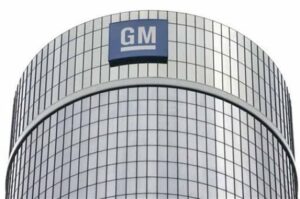The United Auto Workers strike against General Motors Co. is entering its third week with the two sides deadlocked in standoff about the key issues such as wages, health care and status of temporary workers.
“We’re still in a holding pattern,” said one source familiar with the talks who asked not to be identified because he was not authorized to speak.
Meanwhile, the cost of the strike is mounting for GM, which is increasingly seeing its chance of re-cooping production lost during the walkout. Up until now, much of the one school of thought has been that going into the strike GM had the upper hand.
(UAW, GM Slogging Through Talks; Company Reinstates Health Insurance)
Analysts noted at the outset GM has plenty of inventory on dealer lots, which means it can weather a strike without much difficulty since it was sitting on 77 days of inventory. In addition, GM had ordered mandatory overtime at several key plants to boost production and even hired additional temporary workers to keep the assembly lines moving.
John Murphy, analyst for Bank of America/Merrill Lynch, underscored the conventional wisdom in a note to investors Sept. 27. “In total the strike is not good for GM’s financials in the short run but given (pre-bankruptcy) GM’s history with labor contracts, we believe investors remain supportive of a tough/fair stance,” Murphy wrote.
However, Bloomberg now reports that that analysts that watch the GM’s debt are becoming increasingly nervous about the duration of the strike. GM is losing about $50 million per day and GM own officials admit with the strike entering its third full week the financial damage is increasing.
Analysts for IHS Markit also believe it will be increasingly difficult for GM to make up the lost production. GM is also burning its cash reserves and opening the door to market share gains in the critical pick-up truck market. For three decades, GM negotiators have been able to warn their UAW counterparts that the lost share would go to the Japanese competitors.
With the company’s decision to abandon the passenger car market and its increased dependency on trucks, the argument loses some of its punch as the biggest rivals for market share on the truck side of the business are unionized Ford and Fiat Chrysler N.V.
Going forward, winning back lost share from Ford and Ram could be an expensive proposition.
(GM, UAW Make Some Progress, But Big Issues Remain Unresolved)
Any tentative settlement with the union is now likely to contain concessions by GM on issues such as wages, health care and temporary workers, which could unsettle Wall Street.
In addition, support for the strike has remained surprisingly solid among union members and the public. The seems to have shocked some observers given the cloud created by the federal investigation in the misuse of training and other funds, hovering over the union’s top leadership, including President Gary Jones, whose home was searched by the FBI prior to the strike.
Nonetheless, in interviews, union members clearly focus on their own grievances about pay, the status of temporary workers and GM’s treatment of its blue-collar workers who were instrumental in saving the company the company when it was facing ba
nkruptcy in 2009.
“It’s like we pushed them out of a ditch and now they don’t want to offer us a ride into town. They’re just going to take off,” said Simon Dardu, union member from UAW Local 22, which represents workers at GM’s Detroit-Hamtramck assembly plant.
Democratic Presidential candidates haven’t hesitated to voice their support for the strike and other unions have joined into with support and help with the picketing.
The union leaders also understand that a large part of GM’s workforce, roughly 40% to 45% are temporary or “in-progression“ employees who get less than full pay.
While the temps and in-progression employees have gotten attention, another 15% of the striking union members are skilled tradesman, who believe they were shortchanged the last time around in 2015 when the UAW imposed the skilled trades section of the contract even though it hadn’t been ratified.
(Union Strike Spills Over into Mexico, GM Fires Silao Protestors)
The skilled trades settlement of 2015 is still very much an issue on social media and a concern for union bargainers, who must present a contract to union members once a tentative agreement is reached.




What about the retires ,or do they not count? We are the ones who worked hard to put GM where they were at the top for many years. A few benefits we received when we retired, were taken away!!